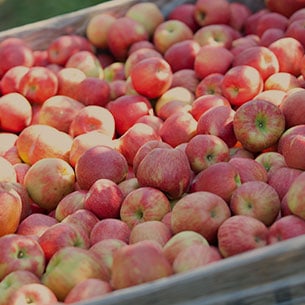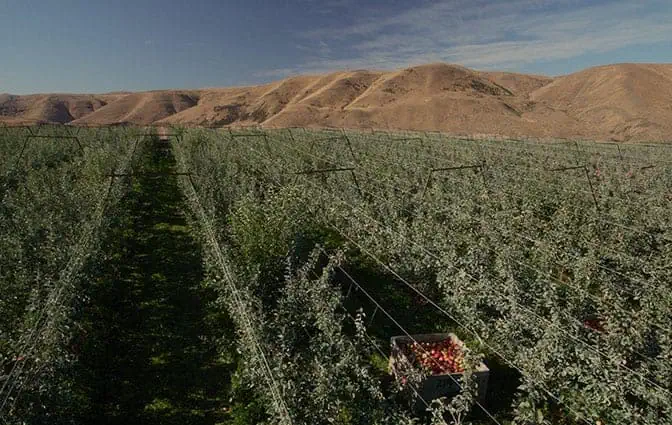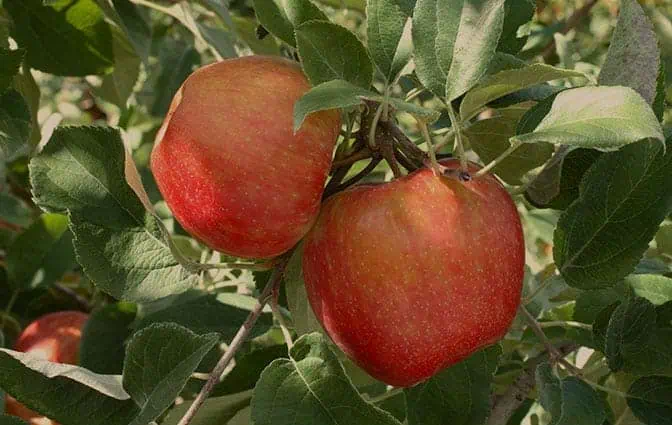Honeycrisp. The name alone evokes a smile in apple lovers everywhere. And while it’s present in the market for most of the year, supplies typically dry up during the summer (but cherries make for decent consolation, right?). So come fall, we anxiously await the arrival of the new crop!
But why? Why is the Honeycrisp so treasured? And WHY does it cost so much?
First things first: the Honeycrisp was developed in 1960 at the University of Minnesota as a cross between the Keepsake and an undetermined parent. It was originally thought that the Honeycrisp was a cross between the Macoun and Honeygold, but that has since been disproven through DNA testing. After decades of careful selection and propagation, the Honeycrisp as we know it was finally ready to make its market debut in 1991.
Without a doubt, the delightfully juicy crunch of this apple combined with a pronounced, yet not overpowering, sweetness has made the Honeycrisp one of the most sought after varieties. The effervescent tingle and sumptuous mouthfeel are signature traits of the Honeycrisp and part of the reason we like to call it the “Champagne of Apples.”
Though Honeycrisp is widely planted in response to its growing popularity, it’s actually regarded as one of the most difficult varieties to grow, store, pack, and ship. We’ve spent the last few decades diligently studying this finicky apple and learning how to bring out its best qualities.
Orchard site location is undeniably the most important factor when it comes to growing vibrant, flavorful Honeycrisp apples. In addition, the age of the tree contributes greatly to their quality. More mature trees produce a more complete flavor profile that is well-rounded and true to the Honeycrisp variety. This is why you may notice a difference in the color and intensity of flavor of apples sourced from different regions.
It wouldn’t make any sense to put all this effort into growing the finest Honeys if we didn’t carry this same attention to detail through the harvesting, packing, and shipping process.
Like all of our fruit, each apple is picked by hand, but the Honeycrisp requires two additional steps. First, because they grow in pairs, they must be carefully picked to prevent accidental loss of one or both of the apples. Because of this, workers must cradle the apples and use both hands, reducing the speed of their efforts.
Second, each stem must be trimmed to prevent it from piercing the delicate skin. This also adds time to the harvesting process. Because the Honeycrisp is highly susceptible to bruising, the apples must be handled even more gently than hardier varieties.
We take the same great care when packing and shipping to ensure that they are in prime devouring shape when they reach you. It’s that extra attention to detail, that commitment to careful handling, and the borderline-excessive quality checks that make Rainier Honeycrisp apples something special (albeit a little spendier). We like to think they’re worth it!




Hi, this is a comment.
To delete a comment, just log in and view the post's comments. There you will have the option to edit or delete them.